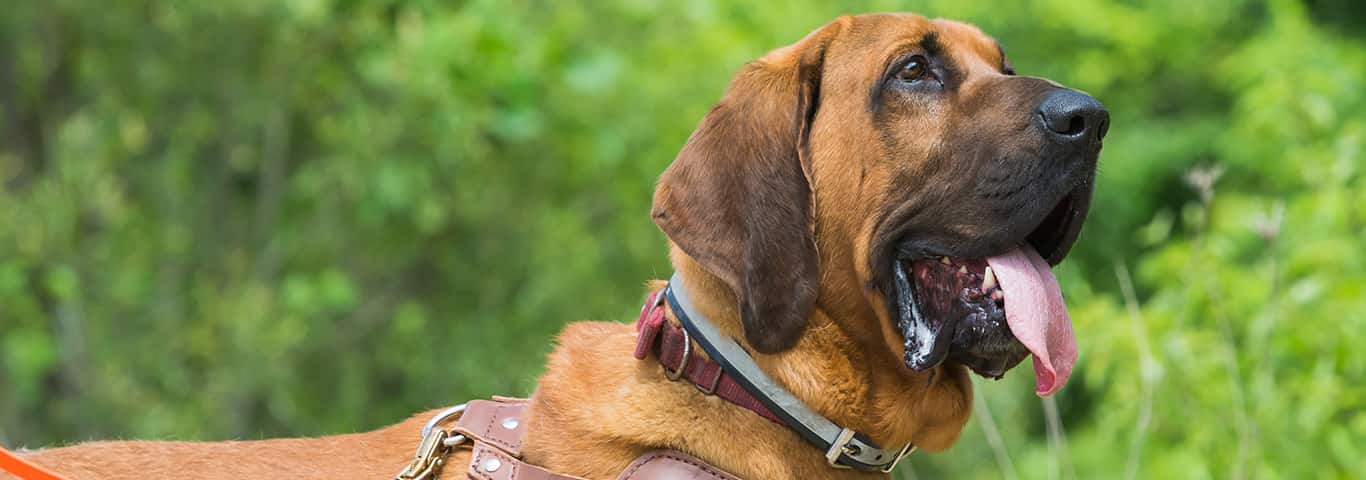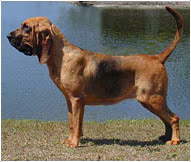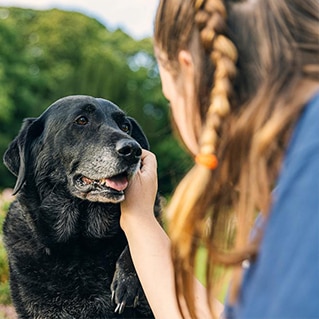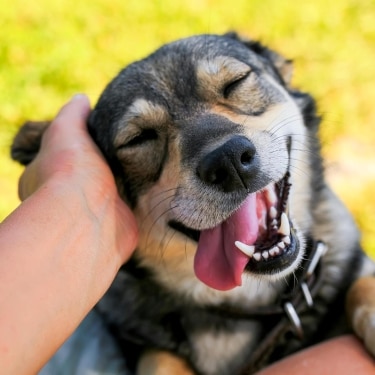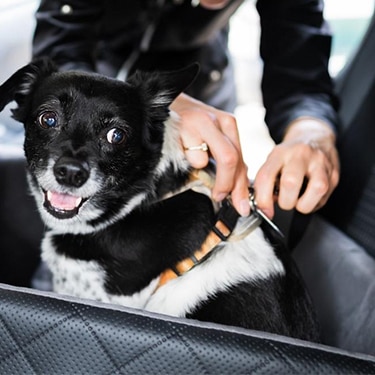The jowls and sunken eyes give this dog a dignified, mournful expression.
The coat is short, rather hard to the touch, and carries one of three possible color combinations: black and tan, liver and tan, or red. Some black and tan bloodhounds are predominantly black except for some tan spots on the legs and face.
Adult male bloodhounds generally range between 25 and 27 inches in height, although some grow as large as 32 inches. Weights range from 90 to 130 pounds (40 to 60 kilograms). Females average 23 to 25 inches in height, but some reach 28 inches. Their weights average 80 to 100 pounds (36 to 45 kilograms).
The bloodhound is a gentle, patient, noble and mild-mannered animal. He's especially good with children and is known to be exceptionally tolerant of tots who clamber over him. He also generally gets along well with other animals.
Beneath this mild-mannered demeanor, however, run deep streaks of determination and independence. A bloodhound has a mind of his own, and tends to make his own decisions rather than obey his owner's commands. This tendency is especially true if the dog has detected an interesting scent; if that happens, he'll be single-minded in his determination to follow the trail as far as he possibly can.
The bloodhound is one of the most melodious members of dogdom. He can perform full canine arias that feature expressive baying, howling and whining.
Bloodhounds can be wonderful canine companions, but they also can be a tremendous challenge. They are relatively slow to mature, hitting adolescence at about one year and not reaching full maturity until at least age two. During that adolescent period, the bloodhound is likely to be boisterous, clumsy, curious about any interesting scent and fearless about eating anything that smells interesting. This tendency to eat includes such inappropriate objects as TV remote controls, towels, batteries and car seats, which results in expensive post-tasting surgery to remove those objects.
This dog's long jowls make him a prodigious drooler, and with a quick turn of his head, he can hurl that drool as far as 20 feet. The bloodhound's tenacity and independence can make training a challenge. Patience and consistency is needed to teach him basic good manners. Do not let your Bloodhound off leash, except in a securely enclosed area. An interesting scent will spark a single-minded pursuit that will make the bloodhound impervious to his guardian's commands. Nevertheless, the bloodhound is an energetic breed that needs lots of exercise, especially as a puppy hood. Like other large dogs, the bloodhound's life span is relatively short, about 10 years.
The bloodhound has a long and noble history. The breed was perfected in the 7th century by St. Hubert of Belgium and his monks. Since then, these dogs have frequently been associated with royalty. William the Conqueror brought several bloodhounds with him when he arrived in England in 1066, and modern bloodhounds are descended from those dogs. Meanwhile, back in Belgium, St. Hubert's monastery continued to present the king of France with a pair of black and tan bloodhounds every year. Even today, in French-speaking parts of Europe, these dogs are known as St. Hubert hounds.
Initially bloodhounds were used to track deer and other game. By the 16th century, however, they also were used to track people. Today bloodhounds assist with law enforcement as well as search-and-rescue efforts. Their abilities are so highly regarded that trails performed by proven trailing bloodhounds are admissible as evidence in court.
Adopt a pet. Change a life.
Are you prepared to adopt a pet? Use these tools to make sure you are ready for the commitment.
Adopt a pet. Change a life.
Are you prepared to adopt a pet? Use these tools to make sure you are ready for the commitment.












